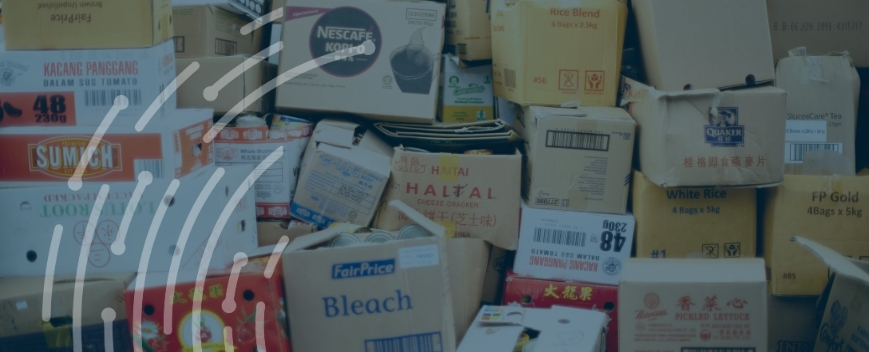Customs clearance process

Access trade, receivables and supply chain finance
We assist companies to access trade and receivables finance through our relationships with 270+ banks, funds and alternative finance houses.
Get startedContents
or many new importers or exporters, clearing customs and getting your goods into the country can be a stressful and uncertain experience.
While many experts and governments recommend working with a customs broker to help ease the process and ensure your goods make it through customs, it can still help have an idea of what is involved in the customs clearance process.
What is customs clearance?
Customs clearance is the set of activities performed by border security personnel to help national governments monitor trade, prevent dangerous activities, and collect revenue.
It is a necessary procedure before goods can be imported or exported internationally.
Often it involves documentation and inspections of goods being imported to and exported from a country.
As a result of these processes, data are also provided to governments that can be used to assess the state of their economies and adjust regulations as necessary.
Countries integrating their economies and lowering trade barriers should lead to easier exporting and importing regulations.
However, this does not eliminate the need to collect data, so documentation will continue to play a significant role in clearance processes for exporting and importing.
As technology becomes more widespread in the international trade world, many governments are beginning to adapt their customs clearance processes to accommodate digital documents and streamline their operations.
With so many countries in the world, there could never be a set of guidelines to cover all possible scenarios, however, standardisation efforts from the World Customs Organization (WCO) and several other international recommendations mean that are some common activities that importers and exporters can expect in the customs clearance process.
What is the customs clearance process?
The importing and exporting customs clearance process will be vastly different depending on several factors involved in the transaction:
- The trade regulations of the exporting and importing countries.
- Type of goods being exported (for example, are the goods included on an import or export control list or are they food products).
- Any free trade agreements that are currently in force between the two countries.
- Whether the customs security agents in the countries use digital systems and the degree to which they use them.
While every customs clearance process will be unique depending on the factors listed above, there is a general sequence of steps that can be used to provide new importers and exporters with a sense of what to expect:
- Registering with customs and border security agency, e.g. obtain export/ import business number
- Determining country of origin for the goods being exported
- Ensuring product is importable and exportable by the respective nations
- Ensuring product is allowed into the importing country and out of the exporting country
- Checking that the product has an HS code and determining what that code is
- Filing export or import declaration, if required
- Obtaining import or export licences or permits, if required
- Determining the shipping method and identifying the reporting time frame
- Obtaining product-specific packing documentation or ensuring that the carrier already has the necessary documentation
- Calculating the duties and tariffs that need to be paid
- Calculating the taxes that need to be paid (for example, VAT, GST, or excise taxes) and determining if there are any tax exemptions
- Submitting declaration and other documentation to customs and border security agency prior to shipping bearing all necessary information, if required
- Physically shipping the goods from the exporter to the importer
- Providing or acquiring a certificate of origin and other documents to the importing country’s customs and border security agency.
- Reporting the goods at the border by sending in documentation in advance of shipment and ensuring the carrier provides accurate documentation at the border
- Pay the required duties and taxes to ensure that the goods will be released by customs
- Keeping the necessary import or export records for the required time period
In addition to the many factors that could affect the steps included in this list for a given transaction, the party responsible for each item will depend on the exact terms used in the contract.
International transactions are typically structured using the International Commercial Terms (Incoterms).
To learn more about the Incoterms and the impact they can have on international transactions, check out our Incoterms guide.
How long does customs clearance take?
In much the same way that the exact steps in the customs clearance process will vary based on several factors, the amount of time that customs clearance takes will also vary.
While each country has its own customs procedures, generally, customs officers will visit multiple sites during the day and the process to clear any individual shipment can take anywhere from 12-48 hours in an optimal scenario.
However, there are many reasons why delays can occur during the clearance process.
Errors or omissions in the paperwork can lead to goods remaining stuck in customs for an extended period of time, which can lead to added fees for importers and exporters in the form of demurrage and detention.
Some shipments are selected for auditing, which again can add delays to the process.
The volume of shipments passing through customs can also play a heavy role in the amount of time that it takes to clear customs.
During the buildup to the holiday season, for example, it often takes longer for shipments to clear simply because there is a larger volume for customs and border agents to inspect.
- Customs Resources
- All Customs Topics
- Podcasts
- Videos
- Conferences














